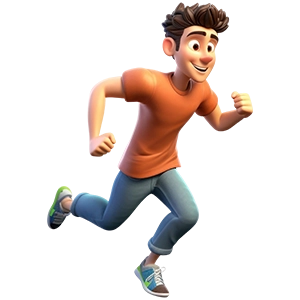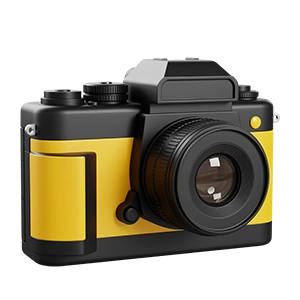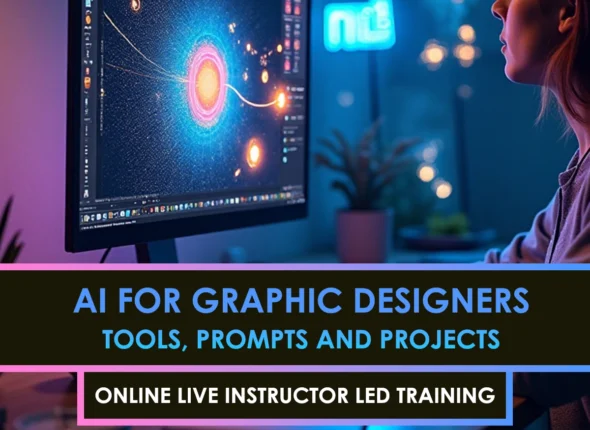If you want to transform your filmmaking quickly, CGI/live-action visual effects can offer that cinematic punch you’ve always wanted. By blending computer-generated imagery with real-world footage, you open a universe of creative possibilities. Ready to get started? Below, we’ll explore key steps to help you integrate these two media into one stunning final piece.
Understand CGI/live-action visual effects.
Blending CGI with live action involves seamlessly integrating digital elements into physical scenes, without jarring the viewer. When done correctly, the audience forgets that half the magic on screen came from a computer. If you’re curious about launching your own CGI live-action filmmaking project, start by understanding what each component brings to the table.
The power behind CGI
- Flexibility to create impossible objects or environments
- Freedom to revise scenes without rebuilding a set
- Ability to experiment with lighting, color, and texture
The role of live action
- Offers authentic performances from actors and props
- Adds natural motion and depth
- Grounds CGI in reality, making it easier for viewers to relate
Plan your initial production
Before you yell “action,” make sure you have a clear roadmap. A strong foundation keeps your final shots cohesive and reduces headaches later.
Storyboard your shots
Sketch out every scene, including where CGI elements will appear. This helps your team visualize what belongs on camera and what you’ll add digitally during CGI/live-action post-production.
Key challenges to anticipate
- Matching lighting conditions for digital inserts
- Ensuring camera movements align with CGI tracking
- Budgeting time for extra on-set reference photography or green screen setups
Shoot with integration in mind.
Capturing your live footage is about more than pressing “record.” Small details now can save you hours (and sanity) later.
Think about lighting consistency.y
Your digital creations should blend seamlessly. Use consistent light sources, and note color temperatures on set. If your CGI character stands under a streetlamp, replicate that glow accurately in the digital model.
Capture reference data
Regularly take photos of set lighting, measure distances, and record camera settings. These details feed into your 3D workflow, ensuring you can match the physical environment after the shoot.
Combine CGI in post-production.n
Once you have your live footage, it’s time to integrate those digital assets. This stage is where your creativity shines and your technical expertise is put to the test.
Setting up your 3D scenes
Import your footage into your compositing software, then lay out 3D objects so they accurately track alongside real elements. Use environment maps or HDRIs (High Dynamic Range Images) to reflect on 3D surfaces and mimic real-world lighting conditions.
Rendering for realism
- Render in layers (also called passes) to separate shadows, reflections, and colors.
- Use motion blur on fast-moving CGI elements
- Match camera settings (aperture, focal length) for flawless illusions
Refine seamless transitions
Stitching everything together often requires a few final tweaks. For a deeper look at advanced techniques, you can explore seamless CGI/live-action transitions; however, here are the basics.
Compositing for final polish
Compositing involves placing CGI elements over live footage. During CGI/live action compositing, pay attention to edge details and color alignment so your renders don’t “float” on top of the scene.
Watch your color grading.
Once every piece is in place, unify your shots with a balanced color grade. Adjust hues and contrasts so new layers appear part of the same family, not distant cousins. Even the slightest mismatch can break the illusion.
Ensure final visual cohesio.n
At this stage, your project is nearly wrapped, but don’t rush the finishing touches. A final pass, plus some honest feedback, can make a world of difference.
Use the final pass
- Double-check shadows around feet, props, and CGI characters
- Inspect transitions during scene cuts
- Confirm that lens flares or reflections remain consistent
Test with peer feedback
Share an early cut with a trusted circle of fellow VFX enthusiasts or friends. Fresh eyes can spot details you might have missed. If people tell you they forgot some elements were digital, pat yourself on the back.
Take the next step
When you blend CGI with live action, you’re not just showing off cool effects—you’re immersing viewers in a richer story world. Keep experimenting, keep learning, and don’t be afraid to tweak. With each project, you’ll get closer to that seamless on-screen blend you crave. Now it’s your turn: pick up a camera, fire up your modeling software, and make the impossible happen. Your audience is waiting.
FAQS – Frequently Asked Questions
What Is CGI/Live Action Visual Effects?
CGI/Live Action Visual Effects involve integrating computer-generated imagery seamlessly into real-life footage to create realistic and compelling visuals.
How Are CGI/Live Action Visual Effects Created?
CGI/Live Action Visual Effects are created using 3D software, match-moving tools, and compositing techniques to blend digital elements with filmed scenes.
Which Software Is Used For CGI/Live Action Visual Effects?
Popular software for CGI/Live Action Visual Effects includes Autodesk Maya, Blender, Nuke, After Effects, and Houdini.
What Is Match Moving In CGI/Live Action Visual Effects?
Match moving is the process of tracking camera movement in live footage so CGI elements can align naturally within the scene.
How Does Lighting Affect CGI/Live Action Visual Effects?
Proper lighting ensures CGI elements blend seamlessly with live action by matching shadows, highlights, and reflections.
Are CGI/Live Action Visual Effects Used In All Films?
Not all films use CGI/Live Action Visual Effects, but they are widely applied in action, sci-fi, and fantasy genres to enhance realism or create impossible scenes.
What Skills Are Needed To Work On CGI/Live Action Visual Effects?
Skills required include 3D modeling, animation, compositing, tracking, and a solid understanding of real-world physics and cinematography.
Can CGI/Live Action Visual Effects Be Done At Home?
Yes, with access to software and hardware, individuals can create CGI/Live Action Visual Effects from home, though high-end results require professional skills.
How Is Green Screen Used In CGI/Live Action Visual Effects?
Green screens allow for background removal so CGI environments or effects can replace the green area in live action shots.
What Role Does Compositing Play In CGI/Live Action Visual Effects?
Compositing combines multiple visual elements into a final shot, making CGI and live action appear integrated and realistic.
Why Are CGI/Live Action Visual Effects Important In Media?
They enable filmmakers to tell visually rich stories, depict fantasy worlds, and create immersive viewer experiences.
How Is Depth Of Field Simulated In CGI/Live Action Visual Effects?
Depth of field is simulated by adjusting focus in CGI elements to match the camera lens settings of the live action footage.
What Is The Cost Of Creating CGI/Live Action Visual Effects?
Costs vary widely depending on complexity, duration, and production quality, from a few thousand to millions of dollars per sequence.
How Do You Learn CGI/Live Action Visual Effects?
You can learn through online courses, film schools, and VFX academies that specialize in CGI/Live Action Visual Effects training.
What Is The Future Of CGI/Live Action Visual Effects?
The future of CGI/Live Action Visual Effects lies in real-time rendering, AI-driven effects, and more immersive storytelling using VR and AR.
Can CGI/Live Action Visual Effects Replace Real Sets?
In many cases, yes. Virtual production and CGI/Live Action Visual Effects are now used to create realistic sets without physical builds.
What Are Some Examples Of Great CGI/Live Action Visual Effects?
Movies like Avatar, Inception, and The Avengers showcase groundbreaking use of CGI/Live Action Visual Effects.
How Long Does It Take To Create CGI/Live Action Visual Effects?
Production time depends on complexity but can range from a few hours for simple shots to months for intricate sequences.
How Do CGI/Live Action Visual Effects Impact Storytelling?
They expand creative boundaries, allowing stories to be told in visually extraordinary ways that wouldn’t be possible with just live footage.
What Are Common Mistakes In CGI/Live Action Visual Effects?
Poor lighting, bad tracking, mismatched perspectives, and unrealistic physics can break the illusion of CGI/Live Action Visual Effects.
Are CGI/Live Action Visual Effects Used In TV Shows?
Absolutely. Many high-end series like The Mandalorian and Stranger Things rely heavily on CGI/Live Action Visual Effects.













